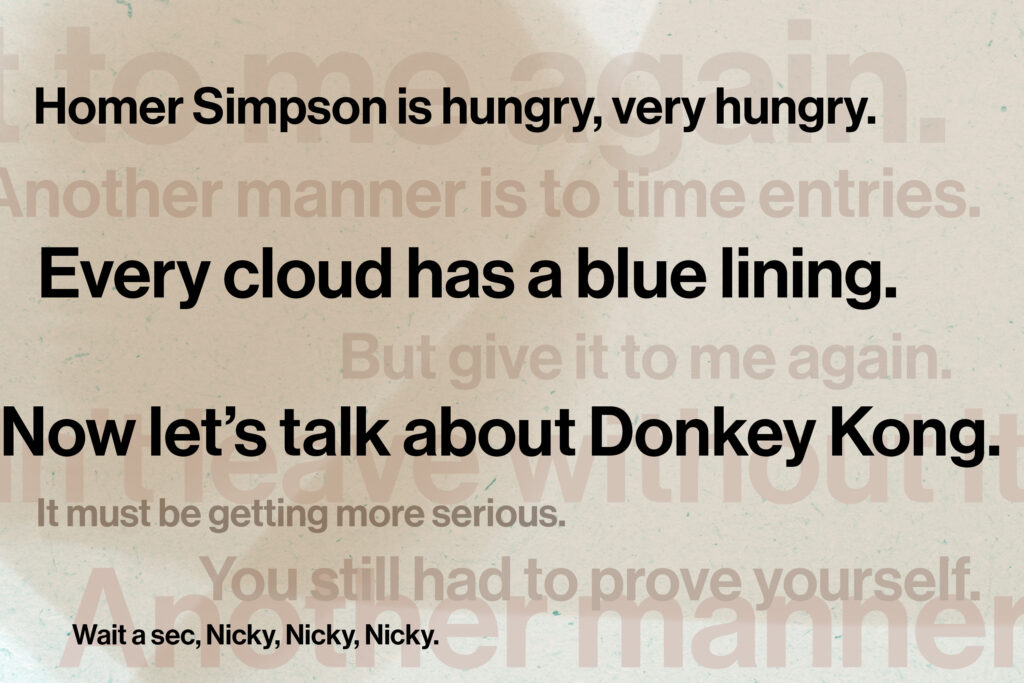
“You still had to prove yourself.” “Every cloud has a blue lining!” Which of these sentences are you most likely to remember a few minutes from now? If you guessed the second, you are probably correct. According to a new study by MIT cognitive scientists, sentences that linger in our minds are those with distinctive meanings, setting them apart from previously encountered sentences. The study reveals that meaning, rather than any other trait, is the key factor in sentence memorability.
“One might have thought that when you remember sentences, maybe it’s all about the visual features of the sentence, but we found that that was not the case. A big contribution of this paper is pinning down that it is the meaning-related space that makes sentences memorable,” says Greta Tuckute, PhD ’25, now a research fellow at Harvard University’s Kempner Institute.
Understanding Sentence Memorability
The findings support the hypothesis that sentences with distinctive meanings, such as “Does olive oil work for tanning?” are stored in brain space that is not cluttered with sentences that mean almost the same thing. Sentences with similar meanings end up densely packed together, making them harder to recognize confidently later on, the researchers believe.
“When you encode sentences that have a similar meaning, there’s feature overlap in that space. Therefore, a particular sentence you’ve encoded is not linked to a unique set of features, but rather to a whole bunch of features that may overlap with other sentences,” explains Evelina Fedorenko, an MIT associate professor of brain and cognitive sciences and senior author of the study.
Greta Tuckute and Thomas Clark, an MIT graduate student, are the lead authors of the paper, which appears in the Journal of Memory and Language. MIT graduate student Bryan Medina is also an author.
Distinctive Sentences and Their Impact
The question of what makes certain things more memorable than others has long intrigued cognitive scientists and neuroscientists. In a 2011 study, Aude Oliva, now a senior research scientist at MIT, demonstrated that not all items are created equal: some images are much easier to remember than others, and people consistently remember certain types of images better.
Oliva’s research indicated that images with people are the most memorable, followed by human-scale spaces and close-ups of objects, while natural landscapes are the least memorable. Building on this, Fedorenko and Oliva, along with Ted Gibson, another faculty member in brain and cognitive sciences, explored whether words also vary in memorability. A study published earlier this year, co-led by Tuckute and Kyle Mahowald, found that words with distinctive meanings are the most memorable.
Words like “pineapple” or “avalanche” were found to be very memorable, while words with multiple meanings, such as “light,” or many synonyms, like “happy,” were harder to recognize accurately.
In the new study, researchers expanded their scope to analyze sentence memorability. Just like words, some sentences have very distinctive meanings, while others convey similar information in slightly different ways.
Conducting the Study
To conduct their research, the team assembled a collection of 2,500 sentences from publicly available databases, including text from novels, news articles, and movie dialogues. Each sentence contained exactly six words. A random selection of about 1,000 sentences was presented to each participant, including repeats. Each of the 500 participants was asked to press a button when they recognized a sentence they had seen earlier.
The most memorable sentences, where participants accurately and quickly indicated recognition, included strings like “Homer Simpson is hungry, very hungry,” and “These mosquitoes are – well, guinea pigs.”
These memorable sentences overlapped significantly with those determined to have distinctive meanings, as estimated through a high-dimensional vector space of a large language model known as Sentence BERT. This model generates sentence-level representations for tasks like judging meaning similarity, providing a distinctness score for each sentence based on semantic similarity to others.
The researchers also evaluated sentences using a model predicting memorability based on the average memorability of individual words. While this model performed fairly well, Sentence BERT was more effective, suggesting that a sentence’s overall meaning, beyond individual words, determines its memorability.
The Noisy Representation Hypothesis
While cognitive scientists have long hypothesized that the brain’s memory banks have limited capacity, the new study supports an alternative hypothesis explaining how the brain forms new memories without losing old ones. This alternative, known as the noisy representation hypothesis, suggests that when the brain encodes a new memory, it is represented in a noisy way, meaning the representation is not identical to the stimulus, and some information is lost.
“The representation is gradually going to accumulate some noise. As a result, when you see an image or a sentence for a second time, your accuracy at judging whether you’ve seen it before will be affected, and it’ll be less than 100 percent in most cases,” says Clark.
However, if a sentence has a unique meaning encoded in a less crowded space, it will be easier to recall later. “Your memory may still be noisy, but your ability to make judgments based on the representations is less affected by that noise because the representation is so distinctive to begin with,” Clark adds.
Future Research and Implications
The researchers now plan to study whether other sentence features, such as more vivid and descriptive language, might also contribute to memorability and how the language system interacts with hippocampal memory structures during encoding and retrieval. The research was funded by the National Institutes of Health, the McGovern Institute, the Department of Brain and Cognitive Sciences, the Simons Center for the Social Brain, and the MIT Quest Initiative for Intelligence.
This development could have implications for understanding how we process and retain information, potentially influencing educational strategies and communication methods. As researchers delve deeper into the intricacies of memory and language, the findings may pave the way for new insights into cognitive function and memory enhancement techniques.






